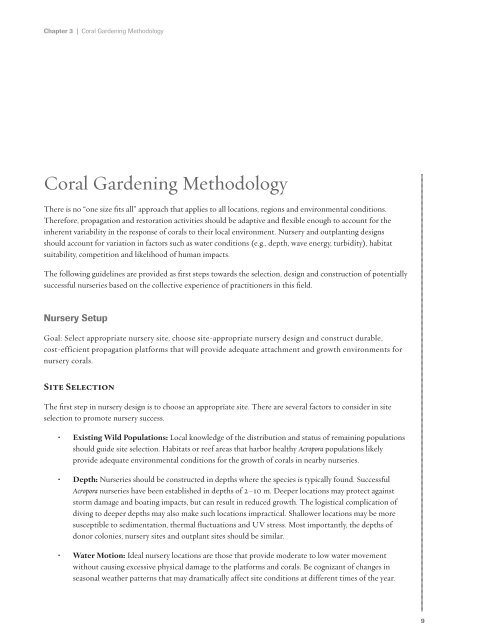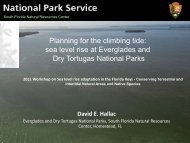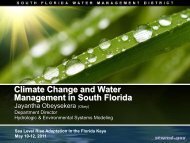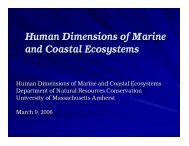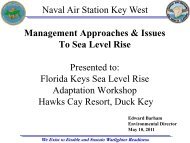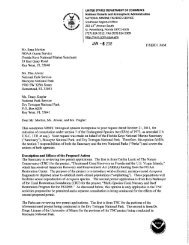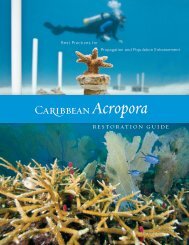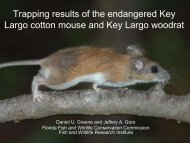Caribbean Acropora Restoration Guide - The Florida Reef ...
Caribbean Acropora Restoration Guide - The Florida Reef ...
Caribbean Acropora Restoration Guide - The Florida Reef ...
Create successful ePaper yourself
Turn your PDF publications into a flip-book with our unique Google optimized e-Paper software.
Chapter 3 | Coral Gardening Methodology<br />
Coral Gardening Methodology<br />
<strong>The</strong>re is no “one size fits all” approach that applies to all locations, regions and environmental conditions.<br />
<strong>The</strong>refore, propagation and restoration activities should be adaptive and flexible enough to account for the<br />
inherent variability in the response of corals to their local environment. Nursery and outplanting designs<br />
should account for variation in factors such as water conditions (e.g., depth, wave energy, turbidity), habitat<br />
suitability, competition and likelihood of human impacts.<br />
<strong>The</strong> following guidelines are provided as first steps towards the selection, design and construction of potentially<br />
successful nurseries based on the collective experience of practitioners in this field.<br />
Nursery Setup<br />
Goal: Select appropriate nursery site, choose site-appropriate nursery design and construct durable,<br />
cost-efficient propagation platforms that will provide adequate attachment and growth environments for<br />
nursery corals.<br />
Site Selection<br />
<strong>The</strong> first step in nursery design is to choose an appropriate site. <strong>The</strong>re are several factors to consider in site<br />
selection to promote nursery success.<br />
• Existing Wild Populations: Local knowledge of the distribution and status of remaining populations<br />
should guide site selection. Habitats or reef areas that harbor healthy <strong>Acropora</strong> populations likely<br />
provide adequate environmental conditions for the growth of corals in nearby nurseries.<br />
• Depth: Nurseries should be constructed in depths where the species is typically found. Successful<br />
<strong>Acropora</strong> nurseries have been established in depths of 2–10 m. Deeper locations may protect against<br />
storm damage and boating impacts, but can result in reduced growth. <strong>The</strong> logistical complication of<br />
diving to deeper depths may also make such locations impractical. Shallower locations may be more<br />
susceptible to sedimentation, thermal fluctuations and UV stress. Most importantly, the depths of<br />
donor colonies, nursery sites and outplant sites should be similar.<br />
• Water Motion: Ideal nursery locations are those that provide moderate to low water movement<br />
without causing excessive physical damage to the platforms and corals. Be cognizant of changes in<br />
seasonal weather patterns that may dramatically affect site conditions at different times of the year.<br />
9


